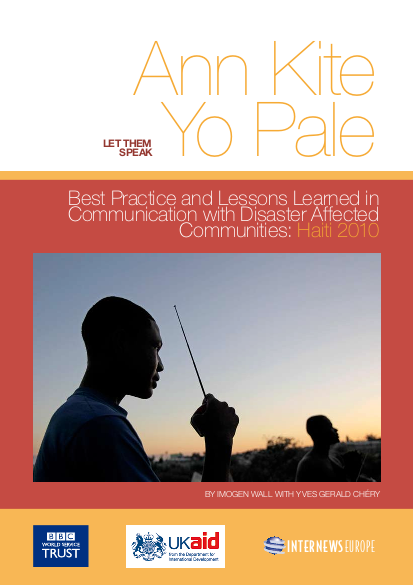
The 7.0 magnitude earthquake that struck the south of Haiti on January 12th 2010 triggered the largest humanitarian response since the Indian Ocean Tsunami of 2004. Hundreds of international agencies launched emergency responses, and local organisations, the Haitian diaspora, the private sector and many thousands of individuals also poured energy, money and time into finding ways to help.
The earthquake was unfortunately not the only serious emergency to strike Haiti in 2010. The outbreak of cholera in the town of St Marc on October 18th 2010 brought a new, highly infectious and deadly disease to a country with weak sanitation and health systems, and no knowledge or understanding of this illness. The response of communication actors from the first hours was essential to the survival of potentially thousands of people, whose ability to recognise symptoms and take prompt action was literally the difference between life and death.
This paper attempts to capture some of the communication work implemented by a whole range of partners, and to identify what was delivered from the perspectives of those affected by these two major but very different emergencies. The purpose of this exercise is to inform the continuing response in Haiti and to provide practical case studies and analysis of best practice models that may be useful elsewhere.
Resource collections
- Accountability to affected populations (AAP)
- Evaluating humanitarian action
- Monitoring of humanitarian action
- Topics
- UN Habitat - Urban Response Collection
- Urban Response - Urban Crisis Preparedness and Risk Reduction
- Urban Response Collection - Community Engagement and Social Cohesion
- Urban Response Collection - Economic Recovery
- Urban Response Collection - Environment and Climate Change
- Urban Response Collection - Housing, Land and Property
- Urban Response Collection - Urban Crisis Response, Recovery and Reconstruction
- Urban Response Collection - Urban Resilience